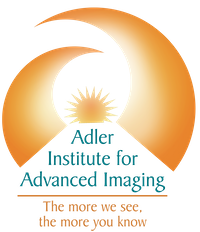PET/CT Scanning in Oncology
The management of cancer has evolved over the years to include many modalities of treatment such as surgery, chemotherapy and radiation therapy. Proper management requires accurate diagnosis and evaluation of spread of tumor. At Adler Imaging, a PET/CT scanner provides sophisticated imaging to assess the original tumor as well as metastatic disease.
Our service is fully integrated into the medical oncology and surgery groups throughout the Greater Philadelphia area and beyond. Adler Imaging provides computerized access to images to for up-to-the-minute information.
Benefit of Adler Imaging PET/CT in oncology
Clinical research data has proven that PET/CT scanning is superior to conventional imaging in the diagnosis and management of various types of cancers. Moreover, the appropriate use of PET/CT can lead to a significant change in the management a patient's care.
Value of Adler Imaging PET/CT: Major tumor types that PET/CT can be useful
Depending on your clinical situation, PET/CT scanning at Adler Imaging has been proven to be critical in virtually all malignancies.
How Adler Imaging PET/CT works
Cancer cells require a great deal of sugar, or glucose, to have enough energy to grow. Adler Imagining PET/CT scanning utilizes a radioactive molecule that is similar to glucose, called fluorodeoxyglucose (FDG). FDG accumulates within malignant cells because of their high rate of glucose metabolism. Once injected with this agent, the patient is imaged on the whole body PET/CT scanner to reveal cancer growths which may have been overlooked or difficult to characterize by conventional CT, X-Ray, or MRI.
Combined PET/CT imaging: The added advantage
The PET/CT scanner at Adler Imaging combines two state-of-the-art imaging modalities. By monitoring glucose metabolism, PET provides very sensitive information regardless of whether a growth within the body is cancerous or not. CT, meanwhile, provides detailed information about the location, size and shape of various lesions, but cannot differentiate cancerous lesions from normal structures with the same accuracy as PET. The combined PET/CT scanner merges PET and CT images together.
